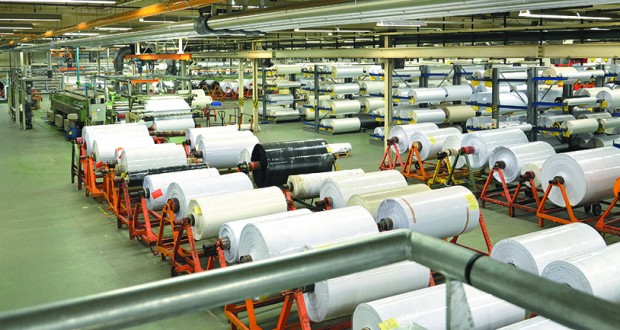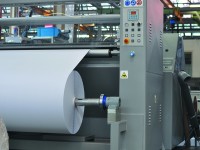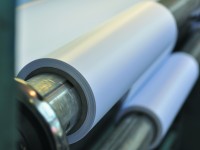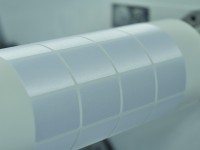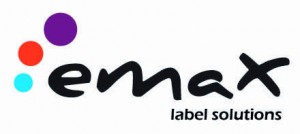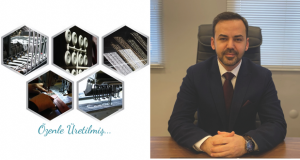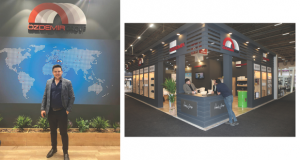Emax offers sticky labels for top performance on mattresses
A joint venture of multiStiQ (The Netherlands) and Chiasa (Spain) Emax Label Solutions produces label materials for many industries 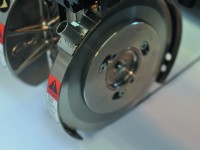 including mattresses, carpets, garments, tires, construction, footwear, furniture and advertising industries.
including mattresses, carpets, garments, tires, construction, footwear, furniture and advertising industries.
The company has been serving its customers through factories in Holland and Spain and via sales offices in Turkey, Germany, Bangladesh, Brazil, Mexico and HK-Shanghai.
It has business partners in several industries, but it mainly deals with label printers. Major groups of customers are composed of label printers who look for difference and quality. Recently focused on Turkish market, the company have been decided to concentrate on materials suitable for digital printing and developed plans to be more active on this area in since 2015.
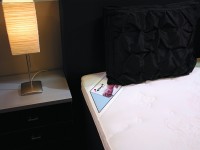 Mattress manufacturers, who are one of the buyers of sticky labels, need variety of labels to be used on different parts of mattresses for various purposes. They can be made of satin, nylon taffeta, leather or cotton etc. They are put on surfaces and sealed or stitched to the mattress. Mainly hot melt and acrylic adhesives are used for gluing the labels.
Mattress manufacturers, who are one of the buyers of sticky labels, need variety of labels to be used on different parts of mattresses for various purposes. They can be made of satin, nylon taffeta, leather or cotton etc. They are put on surfaces and sealed or stitched to the mattress. Mainly hot melt and acrylic adhesives are used for gluing the labels.
The labels have information about the design, company logo, barcode or other information printed on PES satin, nylon taffeta, PP or paper face stock. In Turkey, polyester satin and nylon taffeta face stock are commonly preferred by mattress manufacturers.
What are the criteria for best performance mattress labels?
As labels are important supplementary for mattresses, manufacturers expect durability and printing quality. Printing quality, back coating and adhesion strength are the most important criteria that securing best performance.
Printing Quality depends mostly on the face stock and printer compatibility. Printers can be conventional or digital. Emax has high knowledge of the latest printing technologies and how to implement these on textile surfaces. The company produces almost for all printers which are offset, flexo, thermal transfer , HP INDIGO , screen-print, letter press , inkjet (water based inks, UV inks, oil based inks, HP latex, Epson Sepiax etc. ) Xerography, phaser, or dot-matrix .
Back Coating and Adhesion Strength
No manufacturer can tolerate the fall of any label from mattress. This is very risky for marketing, stocking, and from design and legal points of view.
There are many steps to ensure strong adherence to mattress and prevent failure. 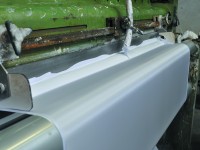
First step, is to take into account of the specific properties of textile, ensure thermal stabilization of fabrics, make calendaring for improved surface or softer handle. Next step is back coating of face stock . Unless back coating, adhesive can bring up to face stock and cannot be coated well on backside of face stock, which leads to weak adhesion strength. Back coating is also must for stitched labels to prevent non-fraying on the edges.
Back coating process certainly is an additional cost and abstained by some producers for whom not having standard quality but having lower price is a priority. This is very sensitive an inevitable process for Emax.
Lastly, choosing the right adhesive type is important. The coating of most convenient adhesive is too critical for labels. Producers has to decide adhesive type according to the mattress fabric will be adhered to and requests of mattress manufacturers. Adhesive type can be hot-melt or acrylic mainly.
Mattress fabric structure is the main criteria to be decided adhesive formula. In case of unconformity with fabric and adhesive formula, it is natural that labels will fall down. Because of these mattress manufacturers has to inform label producers about any change in mattress fabric prior to their orders and ask for suitable adhesive.
Some mattress labels are required to be long lasting and hot melt permanent adhesive has to be coated. On the other hand, some labels are requested to be come off just after mattress sold to the end user and any residue is not accepted after come off. Then, acrylic adhesive has to be used.
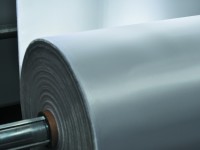 In summary, producing the best performance mattress label is a result of best knowledge in textile structure, coating techniques, adhesive and understanding the customer expectations .
In summary, producing the best performance mattress label is a result of best knowledge in textile structure, coating techniques, adhesive and understanding the customer expectations .
The expertise in printing techniques, textile and adhesives especially the combination of these aspects makes Emax as an interesting partner for many mattress manufacturers.
Emax has a high knowledge on the latest printing technologies and know how to implement these on textile surfaces. The production facilities allow small runs (3.000m²) for special products or tailor made solutions, from too low grams to very high grams of heat seal (10-200gr/m² and self adhesive ( 5gr/m²- 60gr/m²). The standard materials can be adjusted to the needs of customers.
In factories of the company in Holland and Spain special processes are carried out as of self adhesive, heat seal and water based dispersion coatings, for multitude of specific properties to textile, ensuring thermal stabilization of fabrics, making calendaring for improved surface or softer handle. They have different slitting and cutting facilities in both factories such as cutting and slitting (tapes, sheets ) and die cutting (labels of roll). There are also units for scatter coating of heat sealable powders, powder for coating (powder dot) and paste dot coating.
The company has been certified by ISO 9001 for quality management. Product specific tests are performed such as shrinkage testing, printing trials, accelerated aging tests, measuring melting characteristics, whiteness measurement, light stability, adhesive peel testing, monitoring weight statistically, chemical uptake controlling and surface smoothness testing during all production process. Materials are also inspected during slitting and rewinding.
#Emax #Label #mattress #Holland #latest #printing #fabric
 SleepTech Magazine Mattress, Accessories, Machinery, Raw Materials
SleepTech Magazine Mattress, Accessories, Machinery, Raw Materials
